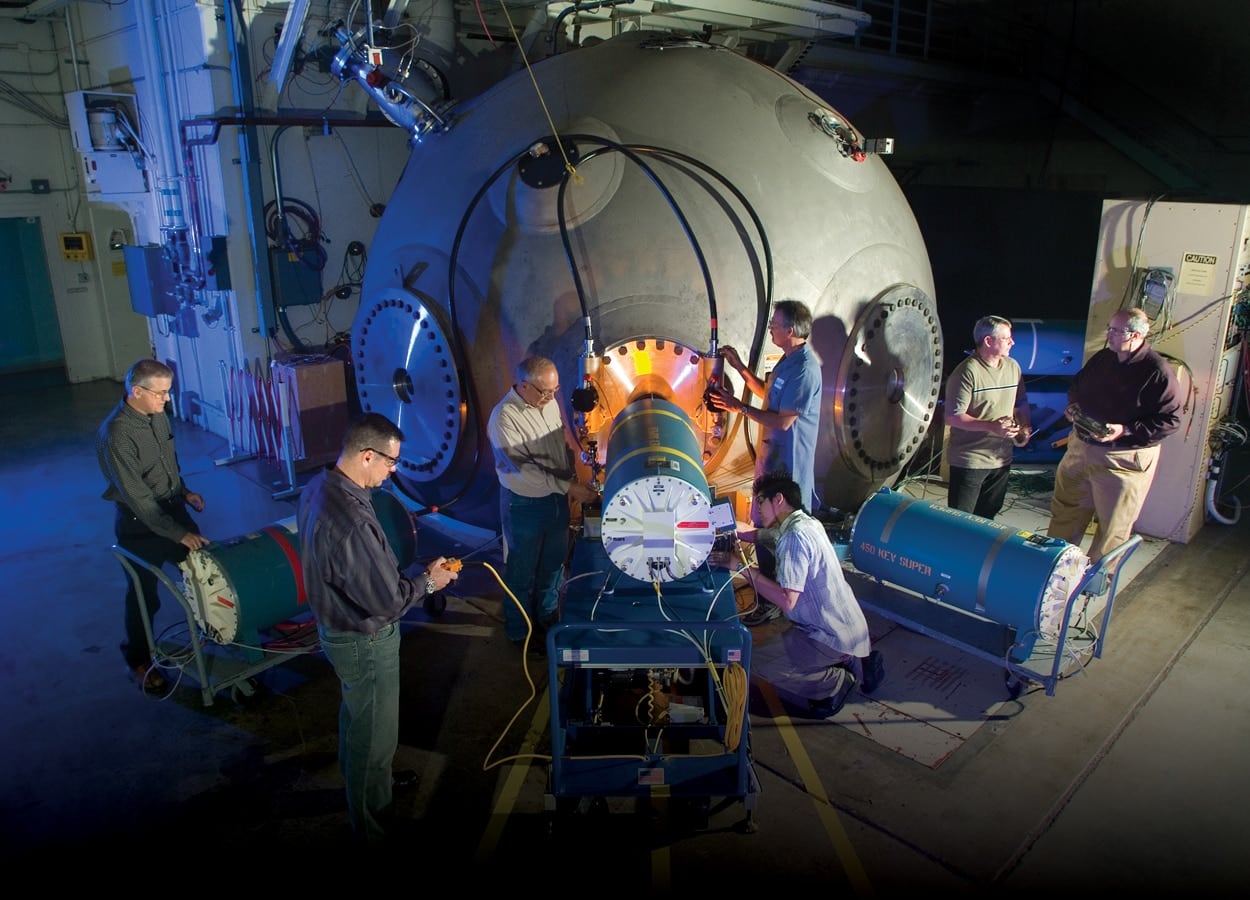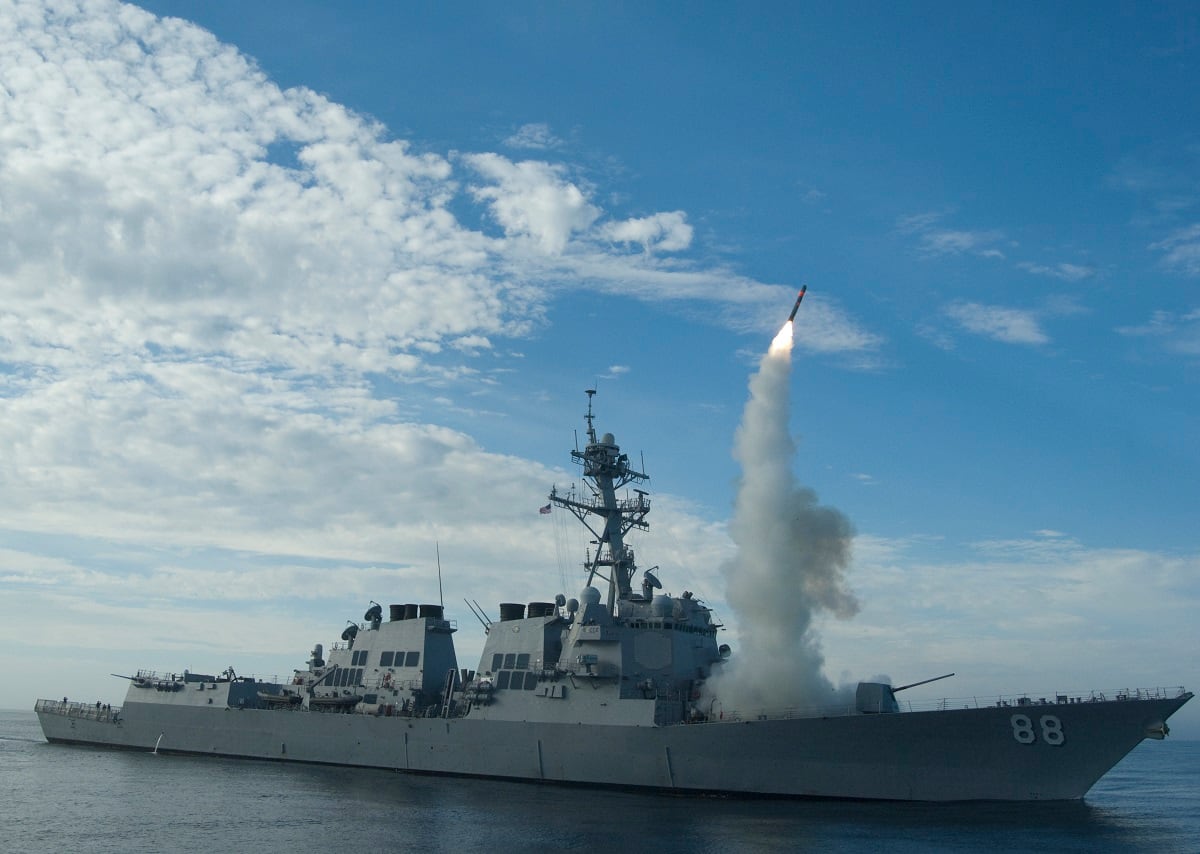WASHINGTON — A top nuclear official at the U.S. Defense Department warned Tuesday that the future of the nuclear arsenal has to come from innovations in the warheads, rather than the Pentagon’s traditional focus on delivery systems.
Peter Fanta, deputy assistant secretary of defense for nuclear matters, said it’s time for the Defense and Energy departments to work together to develop manufacturing and engineering expertise as well as capabilities to create flexible, updated nuclear warheads by the 2040s, or risk being unable to keep up with potential adversaries’ technological developments.
The problem, put simply: Current nuclear modernization plans are supposed to cover needs through 2092, but for those systems to be viable that long, there must be updates that allow for the integration of new technology. After all, potential adversaries are updating their defense capabilities with technologies such as artificial intelligence in ways that would have seemed the realm of science fiction just a decade ago, so trying to predict what they will have by 2040, let alone 2092, is impossible.
However, the U.S. can’t update the physical infrastructure — the side of the silos into which the ground-based strategic deterrent is going, or the size of the bomb bays on a B-21 bomber — on an annual basis.
The solution, Fanta argued, is to look to the warheads themselves, rather than the delivery systems, as the flexible weapons which undergo constant updates.
RELATED

“If a B-2 before could fly in and drop a gravity bomb, that bomb didn’t have to be brilliant,” Fanta said at the Nuclear Deterrence Summit. But with modern air and missile defense networks, “where penetration may not be as assured, maybe we need to relook at gravity bombs and how they are delivered.”
That’s a fundamental change from how the nuclear arsenal traditionally worked, where updates for bombers or propulsion systems were given greater focus than warhead updates. And getting to that point will require a major change in how the Department of Defense looks at its relationship with the National Nuclear Security Administration, a semiautonomous agency within the Department of Energy, which is charged with the development and safekeeping of America’s nuclear warheads.
“How do we as DoD send a demand signal into DOE to say: ‘This is what we need’? We start looking at robustness, margin, penetrability, survivability, communications within weapons,” as well as radiation and cyber-hardening as part of a regular design process, Fanta told the crowd.
The answer? By looking at everything, constantly, as part of a spiral development phase. “We start looking at the internals of the weapons as well as the delivery systems. We start looking at the fuzing, the radiation cases, the aeroshells that wrap around them. We start looking at what we can do to make them hard by design, flexible by design and able to put them into a new system when we decide what that new system is,” he said.
RELATED

But that process has to be constant and able to happen without sending each warhead back to the Pantax plant in Texas for a total overhaul in response to a new threat, he said.
Speaking to Defense News after his speech, Fanta acknowledged this is a long-term challenge for the Pentagon, as the NNSA and Pentagon already have a plan underway to upgrade the existing warheads.
“We’ve got 20 years of work laid out to just keep our current systems going, to prevent us from rusting to zero, to refresh what we have,” Fanta said. “We can’t drop what we’re doing now and go completely to the future aspects because we have an aging population of warheads now that we need to replace.”
But “if you don’t think about it as you rebuild your design, engineering, manufacturing complex, if you don’t think about what you might need in the future, you will never make the room for it as you build what you’re rebuilding now,” he added. “Frankly, our delivery platforms don’t come online until the ’30s or ’40s. You have to think about that advanced capability as you think about it now, so you put in the capability to adjust to future threats and adjust to future systems.”
In the near-term, Fanta said, the DoD is satisfied with the strategy under NNSA to increase nuclear pit production, despite all involved agreeing pit production should have started sooner.
He also indicated the DoD has no concerns about the ability to integrate the new W76-2 low-yield nuclear warhead onto delivery systems, saying the execution would be quick, while declining to provide a timeline.
Aaron Mehta was deputy editor and senior Pentagon correspondent for Defense News, covering policy, strategy and acquisition at the highest levels of the Defense Department and its international partners.








